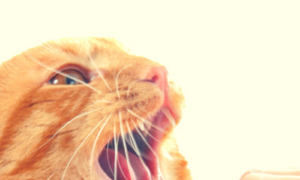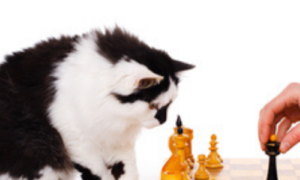 Many people that don’t consider themselves “cat people” do so because they don’t understand cat behavior. Cat lovers have long known that the image of cats as aloof and unfriendly beings is not accurate. Now, science is helping prove this fact.
Many people that don’t consider themselves “cat people” do so because they don’t understand cat behavior. Cat lovers have long known that the image of cats as aloof and unfriendly beings is not accurate. Now, science is helping prove this fact.
A recent study published in the Journal of Veterinary Behavior found that cat behavior toward owners is similar to the behavior of young children toward their mothers. The study, conducted by Claudia Edwards and colleagues, shows that when cats were with their owners, the cats were more relaxed and engaged in normal cat behavior like exploring and playing. When the cats were in the company of strangers, the cats tended not to be as vocal and waited by the door.
This study of cat behavior is consistent with Attachment Theory developed in the 1950’s. This theory explains how the relationship between parent and child influences development.
Attachment Theory states that infants become attached to individuals who are sensitive and responsive with them, and remain as consistent caregivers for some months during the period from about six months to two years of age. When the infant begins to crawl and walk they begin to use attachment figures (familiar people) as a secure base to return to after exploration. Positive caregiver responses help develop patterns of attachment; these, in turn, will guide the individual’s perceptions, emotions, thoughts and expectations in later relationships. Separation anxiety or grief following the loss of an attachment figure is considered to be a normal response for an attached infant.
Cats really are more like us than many realize!
Sources: digitaljournal.com & Wikipedia





